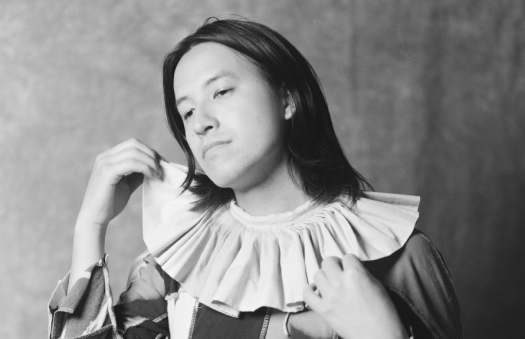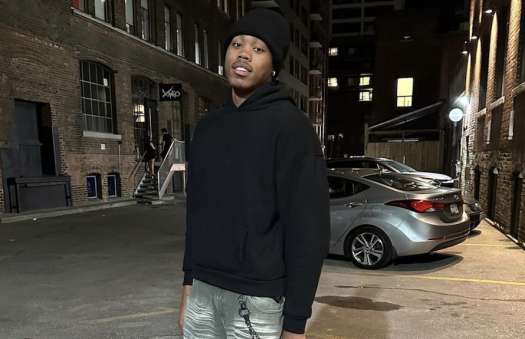Love him or hate him, Banksy — the Bristol-bred street artist extraordinaire — is one of the most culturally pervasive figures in the modern art world today.
That's why, back in the fall of 2013, people living in New York went into a tizzy when they discovered that the polarizing political graffiti artist was crossing the pond for a self-described citywide residency in the Big Apple.
For the full 31 days of October, Banksy attempted to unveil one new piece of artwork somewhere in the city, and in the process sent thousands of New Yorkers on a daily scavenger hunt to find the acclaimed artist's (mostly) illegal installations.
Using crowd-sourced footage, photos and tweets, as well as talking head segments featuring some of New York City's finest art critics, journalists and admirers of Banksy's art, director Chris Moukarbel's Banksy Does New York documents the madness that occurred over the month-long affair, and the social, cultural and commercial impact it had along the way.
While the strength of the (purportedly) Banksy-directed documentary Exit Through the Gift Shop was its hyper-meta conceit (i.e. Is this a real documentary, or just another Banksy piece?), Banksy Does New York is a far more straightforward affair (the film is told chronologically, and from the perspective of numerous people) and offers has no single opinion on the artist's worth and importance, culturally or otherwise, other than that it's pretty grand. Instead, Moukarbel merely presents the feelings and emotions he captured and collected from the people most engaged with the month-long project, from the numerous Banksy hunters who followed him every step of the way to the people who ultimately profited from his work; which is where the film gets interesting.
This may be a film about Banksy, but Moukarbel seems ultimately interested in the value of art as a whole (commercially and culturally), and Banksy seems fairly interested in that aspect of it, too (one of the pieces he offered up during his residency involved him buying a $50 painting from a charity thrift shop, stencilling a Nazi soldier onto it, and then donating it back — an act that helped the group raise over a quarter of a million dollars). From locals charging five bucks apiece to passersby on public city blocks to view his work, to the Southampton-based art dealers acquiring his pieces by somewhat shifty means (such as a stone recreation of the Sphinx, currently for sale) then selling it back to the 1% that Banksy's art so clearly rallies against, the most impactful parts of Banksy Does New York don't necessarily involve the public's interactions with his work (which, at least initially, seemed to be the primary goal of the 31-day experiment), but the ways in which money was exchanged (for good or bad reasons) during that time.
By focusing on that aspect, the film paints a pretty clear picture: the fact that we, as a society, undervalue art so much that we consciously turn a blind eye away from the illegal distribution of music, movies and TV episodes, but — at least in the case of one group of intrepid New Yorkers — are still willing to brave ferocious crowds, cut chunks out of buildings and (as one group of men did in the film's climactic ending) risk prosecution in the hopes of getting hold of an original piece of art. Sadly, the only one who seems truly in on the joke is Banksy himself.
(Mongrel Media)That's why, back in the fall of 2013, people living in New York went into a tizzy when they discovered that the polarizing political graffiti artist was crossing the pond for a self-described citywide residency in the Big Apple.
For the full 31 days of October, Banksy attempted to unveil one new piece of artwork somewhere in the city, and in the process sent thousands of New Yorkers on a daily scavenger hunt to find the acclaimed artist's (mostly) illegal installations.
Using crowd-sourced footage, photos and tweets, as well as talking head segments featuring some of New York City's finest art critics, journalists and admirers of Banksy's art, director Chris Moukarbel's Banksy Does New York documents the madness that occurred over the month-long affair, and the social, cultural and commercial impact it had along the way.
While the strength of the (purportedly) Banksy-directed documentary Exit Through the Gift Shop was its hyper-meta conceit (i.e. Is this a real documentary, or just another Banksy piece?), Banksy Does New York is a far more straightforward affair (the film is told chronologically, and from the perspective of numerous people) and offers has no single opinion on the artist's worth and importance, culturally or otherwise, other than that it's pretty grand. Instead, Moukarbel merely presents the feelings and emotions he captured and collected from the people most engaged with the month-long project, from the numerous Banksy hunters who followed him every step of the way to the people who ultimately profited from his work; which is where the film gets interesting.
This may be a film about Banksy, but Moukarbel seems ultimately interested in the value of art as a whole (commercially and culturally), and Banksy seems fairly interested in that aspect of it, too (one of the pieces he offered up during his residency involved him buying a $50 painting from a charity thrift shop, stencilling a Nazi soldier onto it, and then donating it back — an act that helped the group raise over a quarter of a million dollars). From locals charging five bucks apiece to passersby on public city blocks to view his work, to the Southampton-based art dealers acquiring his pieces by somewhat shifty means (such as a stone recreation of the Sphinx, currently for sale) then selling it back to the 1% that Banksy's art so clearly rallies against, the most impactful parts of Banksy Does New York don't necessarily involve the public's interactions with his work (which, at least initially, seemed to be the primary goal of the 31-day experiment), but the ways in which money was exchanged (for good or bad reasons) during that time.
By focusing on that aspect, the film paints a pretty clear picture: the fact that we, as a society, undervalue art so much that we consciously turn a blind eye away from the illegal distribution of music, movies and TV episodes, but — at least in the case of one group of intrepid New Yorkers — are still willing to brave ferocious crowds, cut chunks out of buildings and (as one group of men did in the film's climactic ending) risk prosecution in the hopes of getting hold of an original piece of art. Sadly, the only one who seems truly in on the joke is Banksy himself.




